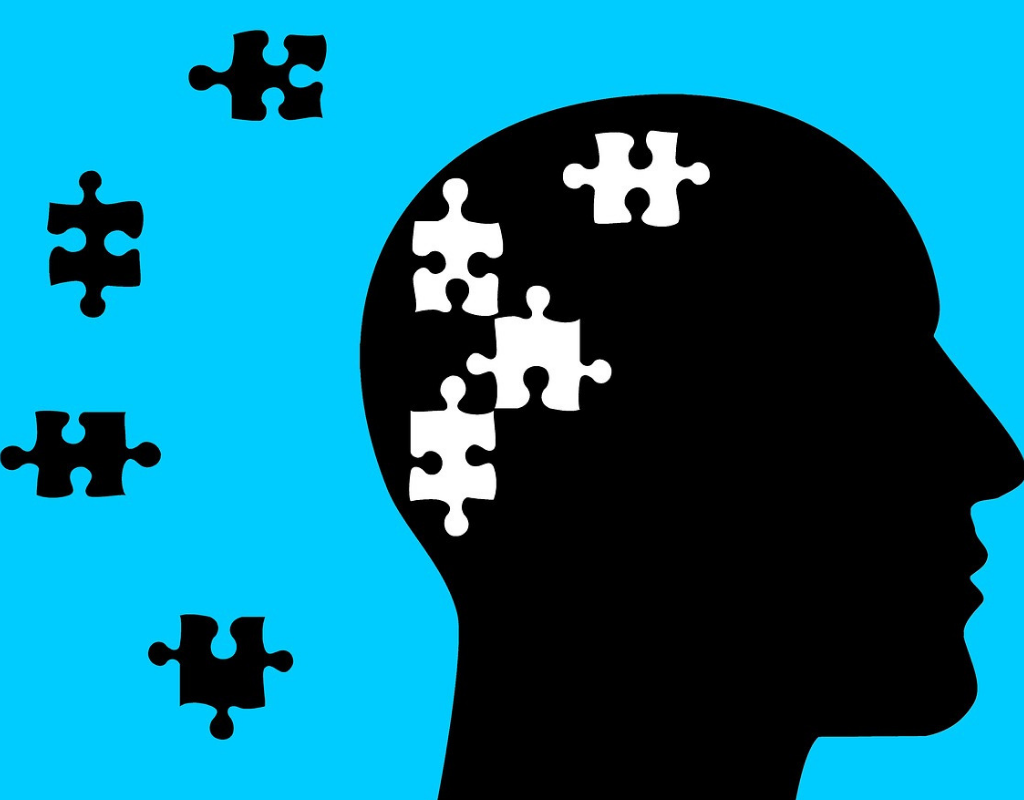By Dr. Jessica Katzman
For the first time in nearly three decades, novel classes of medication are being offered to those suffering from chronic refractory mental health conditions. Studies have shown that 60% to 70% of people with treatment-resistant depression respond positively to ketamine, and some encouraging results are being found with OCD, PTSD, and alcohol dependence.

Though this discovery has been hailed as a massive boon to those living with persistent mental health concerns, their loved ones, and clinicians alike, it may also behoove us to explore the potential unintended consequence of these effective, fast-acting antidepressants.
Many welcome rapid recovery with relief and gratitude in being able to return to their lives; however, in our work with Ketamine-Assisted Psychotherapy, we have noticed that a small percentage of clients also experience a period of disequilibrium and difficulty in adjusting to these changes.
These reactions can range from over-reliance on older coping styles that no longer match one’s current state, to the distress that comes from the loss of a habituated identity (“I don’t even know who I am anymore, without my old buddy, Depression”).
I have come to refer to this response metaphorically as “the therapeutic bends,” as a way to suggest the effects that can occur when we ascend rapidly from great depths.
In two decades of clinical work, I have seen a variety of ambivalent-to-negative reactions to the prospect of “getting better.” Psychotherapy generally offers recovery as a gradual process, with adequate time to adjust and be supported; the “instant cure” has been seen as both unattainable and potentially illusory. The advent of these new treatments requires a shift in how we guide people through this work.
I would like to discuss here some possible layers where distress can occur, and interventions for both clients and providers to consider at each level.
Confronting Reality: Cognitive-Behavioral Layer
 Ketamine infusion pioneer and psychiatrist Dr. Steven Levine has been noting this reaction for some time; in a recent blog post, he encourages providers to set expectations with clients that “even good change is stressful (marriages, moving homes, new jobs, and the birth of children are some of life’s most stressful events).”
Ketamine infusion pioneer and psychiatrist Dr. Steven Levine has been noting this reaction for some time; in a recent blog post, he encourages providers to set expectations with clients that “even good change is stressful (marriages, moving homes, new jobs, and the birth of children are some of life’s most stressful events).”
More dramatically, he describes a process in which one emerges from a depressive episode, then becomes overwhelmed by the herculean tasks ahead:
[W]hen one looks around, one sees with new eyes the surrounding devastation and the casualties from an incapacity to do anything about the growing problems…[this] is akin to a poorly prepared survivor of a nuclear apocalypse stepping out of his bunker into a lonely world of destruction.
Dr. Raquel Bennett, a psychologist and founder of the KRIYA Institute, has also been observing the effects of therapeutic ketamine on one’s sense of self for many years. She echos Dr. Levine’s observations that:
Resistance can come up for some people; they get a little better, and then can get scared, sometimes retreating back into a remission, which is actually more psychological than chemical… People wake up and realize how much time was lost to their illness, how much money was spent, how many relationships ruined, how many opportunities missed… We need to think about how painful it is to just be with that, what this condition has done to one’s life (personal communication, August 12th, 2018).
Additionally, those accustomed to very brief respites from symptoms may have a habitual tendency to throw themselves headlong into intense task completion mode the moment remission begins, in an effort to “get everything that piled up done before the storm hits again.”
FOR PROVIDERS: Dr. Levine writes that “even a ‘magic bullet’ leaves a wound that requires a period of recovery,” and that key components to this recovery are social support and ongoing therapy. Therapy should, in part, focus on “teaching new skills to challenge and combat depressive thoughts, and working towards achieving successes that help rebuild self-esteem.“
Similarly, Dr. Wesley Ryan states that he frames ketamine treatment as something that can provide a catalyst for change, transiently lifting depression, and allowing people to more easily engage in other activities that will protect against relapse. He encourages “regular exercise, healthy eating, socialization, behavioral activation, structure/volunteering/work, work/life balance, addressing activities or relationships that clash with personal values (such as work, for some people), potentially setting better boundaries” (personal communication, August 13, 2018).
Providers may want to focus here on slowing the work down so as to not trigger overwhelm, cognitively reframing approaches to task completion, and teaching new ways to manage the demands of life. Psychotherapists may also invite expressions of regret and grief around the sense of lost opportunities as a way to work through these feelings effectively.
FOR CLIENTS: As stated above, it is important to not overwhelm yourself at this stage. Trust that you will have the opportunity to make repairs and address life tasks over time, and please access as much support as possible to assist you in this undertaking. This is an excellent time to begin practicing new self-care habits that will ensure longer-term change.
Additionally, you may benefit from making space in your life to acknowledge and feel any difficult emotions you may have around what has happened and talking to someone you trust who can listen without judgment. You may want assistance from a therapist, support group, or a good self-help guide in shifting how you think about yourself and your life.
Readjusting Roles: Interpersonal Layer
Dr. Bennett notes that often people’s intimate relationships become organized around the care-giving other people provide, and that “as soon as they start to improve, expectations and the relationship dynamics start to change.”

In family therapy perspectives, the “identified patient” (also “symptom bearer” or “scapegoat”) is a member of a dysfunctional system that has been unconsciously selected to express the distress of that system. Other members may profess concern for the identified patient, but may also react instinctively (and unintentionally) to any improvement by working to reinstate the status quo.
What once seemed like an entirely biochemical illness can often be revealed as multiply determined when we notice loved ones’ discomfort with their ward slipping out of “sick role.” I have often felt concern in watching someone achieve remission, and then return to the same stressful environment in which the initial problems flourished.
In less pathologizing terms, let us remember that there is a social expectation in the continuity of the self over time. People around us have adapted to how we typically act and express ourselves, and react with surprise when that shifts. Those reactions may subtly encourage us to return to our previous baseline. This is rarely intentional, but is extremely important to recognize.
FOR PROVIDERS: Potential interventions to navigate through this period might include family therapy, couples therapy, or psychoeducation on the nature of family systems or group dynamics. We can assist clients in setting appropriate boundaries, and support them in having difficult conversations.
FOR CLIENTS: If this is something you would like to address in your life, please talk to your providers about your specific situation and best practice interventions. It may be helpful to talk through how your relationships might change if your mood improves, or any fears of what might be expected of you if your condition shifts. In general, reading about and practicing Nonviolent Communication is a good way to improve relationships with the people around you.
Exploring Identity: Personal Layer
 Much like our intimate others, we also have an expectation in the continuity of the self. When one has lived with a longer-term condition, there are ways in which it can get woven into one’s own identity. We become habituated to our capacities for activity and relating, and depend on our ability to predict how we might think and feel in any given situation.
Much like our intimate others, we also have an expectation in the continuity of the self. When one has lived with a longer-term condition, there are ways in which it can get woven into one’s own identity. We become habituated to our capacities for activity and relating, and depend on our ability to predict how we might think and feel in any given situation.
It can be incredibly disorienting when a cluster of your regular experiences disappears overnight, and can foster a sense of not knowing yourself at all anymore. (This may be partly responsible for the “rubber band effect”–the tendency to return to our usual modes of being–that Dr. Phil Wolfson discusses in The Ketamine Papers.)
Participation in online forums and support groups can provide invaluable insight and camaraderie; as helpful as this can be, it may also reify one’s social role as a fellow sufferer. We come to define ourselves as a depressed person, as someone struggling with fibromyalgia, as a recipient of Social Security or disability benefits.
(Perhaps this is not such a novel occurrence, after all, as a similar phenomenon emerged with the advent of SSRIs. Peter Kramer noted in his 1997 book Listening to Prozac how his perspective on the nature of temperament was altered by witnessing responses to medication: “I was used to seeing patients’ personalities change slowly, through painfully acquired insight and hard practice in the world. But recently I had seen personalities altered almost instantly, by medication.” He reported similar disorientation and adjustment periods.)
FOR PROVIDERS: Just as we would allow space for someone to discover new aspects of the self during a coming-out process, recognize that the remission period is also a fruitful period for exploration. Identity-making is an ongoing conversation throughout the lifespan. Acknowledge that with every new gain made, there are losses, and parts of our selves and lives that we are saying goodbye to. Inquire about the feelings that might arise during this phase.
In our practice, we draw upon Internal Family Systems (IFS) techniques to help people have productive dialogues with different parts of their psyche, and discover (without judgment) what attachment to a depressed identity might mean for them.
FOR CLIENTS: This is a time to look deeper at the beliefs you hold about yourself, and question their accuracy. You may consider getting reflections from someone who can listen neutrally and without agendas for your direction. A great self-help resource for IFS-style work is Jay Earley’s Self-Therapy.
If you are concerned about returning to the workforce, many communities offer peer and professional support for those returning to work after a period of unemployment. This type of support should encourage autonomy, allow exploration of ability and identity, and avoid perpetuating disempowering ideas about what those with mental health struggles are able to contribute.
Letting it Out: Emotional Layer
 Classic psychoanalytic conceptualizations regarding depression as “anger turned inward” can help frame the irritability or distress that may surface unexpectedly when symptoms remit.
Classic psychoanalytic conceptualizations regarding depression as “anger turned inward” can help frame the irritability or distress that may surface unexpectedly when symptoms remit.
We have supported clients who, once they were relieved of depressive burdens, were then able to confront and feel appropriate anger stemming from past trauma, abandonment, or loss.
This can be an incredibly healing process if one is supported by providers who understand the emerging emotional responses in context, but can be difficult to navigate on one’s own.
Dr. Bennett has also observed anger and/or grief reactions, with people suddenly feeling “angry at God for making them sick, or at the situation, or all the doctors that didn’t help them previously…[W]hen this is buried or held down in the depression, and then starts to come up and out following treatment, people need therapeutic support to address that.”
Though we think about depression as “sadness” and recovery as “happiness,” the reality is often not as simple. Depression can present with a numbing or flattening of emotions, and recovery may mean regaining access to a wide range of different feeling-states. Learning to navigate these states is essential.
FOR PROVIDERS: Set expectations for all involved that recovery may involve unearthing unanticipated feelings and memories. Trauma-informed treatment is essential when working with some of these frozen states. Encourage safe expression of affect in session, and offer psychoeducation around appropriate assertiveness, boundary-setting, and anger management techniques. Teaching and practicing grounding exercises, such as the ones in the Seeking Safety protocol, can help people learn to re-regulate themselves when distressed.
Additionally, Dr. Bennett notes that some continue to have suicidal ideation, but a critical shift occurs in its source, moving from a ruminative, painful “voice in your head that tells you that you’re better off dead,” to a response of grief, loss, or anger. She emphasizes the critical importance of attuned listening by clinicians to differentiate these sources, rather than assuming that the treatment was unsuccessful.
FOR CLIENTS: If strong feelings are emerging during your treatment, please talk to your providers and request specific support for these states. If you are feeling suicidal, please reach out for help from your support network, call a hotline, or access urgent/emergency care. We recommend you do not navigate this process on your own.
If you would like to learn techniques to manage anger, you may find an Anger Management Workbook useful. Interpersonal process groups and assertiveness trainings may also be appropriate. We highly recommend the grounding techniques from the Seeking Safety protocol for those looking to manage the overwhelm that results from a history of trauma.
Digging Deeper: Unconscious Layer
 Above all, we must make space for the deeply personal and idiosyncratic responses people have to both their symptoms and the remission of those symptoms.
Above all, we must make space for the deeply personal and idiosyncratic responses people have to both their symptoms and the remission of those symptoms.
We can not assume that this process has identical meaning for everyone we see. Honoring the uniqueness of the self and its adaptations to life’s challenges is part of what gives this work its beauty and depth.
Furthermore, meaning is held both consciously and unconsciously. Deep structures of the self are laid down early in life, in the interactions between temperament and environment, and are rarely available for immediate reflection. It is the work of ongoing inquiry in the therapeutic relationship to bring these templates into awareness.
For example, I have had the experience of working with people who were eventually able to articulate their depression as the only link remaining with a lost loved one; there is a way in which these symptoms served as tributes to the depth of their connection. Rapid removal of these mood states may then trigger responses of loss and abandonment.
Other clients have also formulated depressions as a coping tool itself: as a protective layer that prevents one from having to engage fully in life, an escape from having to make difficult choices, or an avoidance of confronting painful realities.
Another example is indicated by psychoanalyst Patrick Casement in On Learning from the Patient:
I have noticed, with a number of patients, that the experience of feeling better is sometimes treated by the patient as a signal for further anxiety. Some analysts might treat this as a fear of losing the “secondary gains from illness.” Others might regard it as “negative therapeutic reaction.” However, I believe there are some occasions when a patient is indicating that an unconscious link has been formed between an earlier experience of trauma and the prior sense of safety, as if that “safety” had been a warning signal for the pending disaster. Perhaps an unconscious set is formed in which feeling safe and the subsequent catastrophe are seen as forever linked (1992, p. 364).
FOR PROVIDERS: Although psychoanalytic and psychodynamic frameworks are fundamental to understanding the operation of these deep templates, dogmatic adherence to any one theoretical system forecloses the open exploration of individualized responses. Curious inquiry and a desire to hear about any potential meanings that may arise go much farther than the most brilliant textbook formulation. In essence: “what does this mean for YOU?”
It can be helpful to explore the relationship someone has with their depression, and how that relationship has changed over time. Narrative therapy ideas and practices can assist people in re-writing the stories of their lives into a more integrated personal mythology.
FOR CLIENTS: Part of recovery inherently involves an investigation into the myriad internal, interlocking factors that keep us stuck in old ways of being. Though your situation will be completely unique, you are in fine company with the rest of humanity, as we all struggle to move out of safety and towards growth.
If you sense that there have been ways in which depression has protected you from confronting difficult aspects of life, please make sure you begin to discuss this with your providers. Together, you may begin to re-author the tale of your history in a way that conveys respect for your resilience, as well as hope for the future.
Spiritual Crisis: Transpersonal Layer
 We know that higher-dose journeys with ketamine can produce psychedelic, dissociative states, facilitating a profound transpersonal or mystical peak experience and expanding one’s sense of self and understanding of existence.
We know that higher-dose journeys with ketamine can produce psychedelic, dissociative states, facilitating a profound transpersonal or mystical peak experience and expanding one’s sense of self and understanding of existence.
Dr. Bennett shares that for some, this “contact with the Divine” can be intense and overwhelming, especially if there has not been much preparation for this self-expansion, and if one has been “out of touch with God for 30 or 40 years.” She also notes that the changes one can be called to make in one’s life following a peak experience can be disorienting.
Psychic and spiritual content–especially following the use of psychedelics–can be mistaken for symptoms of psychosis in our highly secular culture. It is extremely important to differentiate between an illness process, and an enhanced sensitivity to transpersonal material. When held in a supportive context, these experiences can be extraordinarily meaningful to people.
FOR PROVIDERS: Have conversations during the preparation phase about your client’s existential concerns, spiritual encounters, and beliefs about the nature of reality or the universe. Familiarize yourself with the techniques and mindset necessary for supporting someone during a spiritual emergence or crisis process. Contemplate the differences between a dark night of the soul vs. depression. Work to bracket your own belief systems in order to allow for free expression.
FOR CLIENTS: Again, adequate preparation for working with ketamine, especially at higher doses, is essential. Please choose your guides wisely, and work closely with them to help you navigate these experiences.
If you are troubled by existential or spiritual concerns following a journey and could use a framework for integration, contact the Spiritual Emergence Network for more resources, including spiritual coaches and helpful reading material. You could work with a provider that specializes in psychedelic integration, or attend a community integration circle. You may also want to seek spiritual guidance within an organized or non-organized tradition (whether Western, Eastern, indigenous, or other). The above linked material on grounding can be helpful if you are experiencing a great deal of energetic activation following treatment.
In practice, these layers are obviously intertwined, and interventions at one level may affect all others, as we present as whole beings, bringing surface-to-depth concerns to every interaction.
As a final note: please know that none of this is intended to frighten you away from obtaining ketamine treatment, but rather to assure you that should you have these experiences, you are not alone, and that there are many ways to move through this phase without necessitating a relapse or causing untoward effects in your life.
Being prepared for the possibility of the therapeutic bends often helps people feel less surprised or destabilized, and collaborating with your support team on how to handle this, should it arise, is of paramount importance.
Thank you so much for reading this post, and we welcome your questions and comments!
About the Author

Dr. Jessica Katzman is a licensed Clinical Psychologist with 19 years of experience as a therapist, and was trained at California Institute of Integral Studies (CIIS) in both traditional and transpersonal perspectives on healing. She is also certified as a Spiritual Emergence Coach, and approaches altered states of consciousness from a nonjudgmental, exploratory stance.
In her private practice, she specializes in integrating psychedelic experiences, supporting LGBTQQIAAP communities and gender-creative folks, addressing alcohol and substance use from a harm reduction perspective, body image issues, mood/anxiety disorders, social justice conversations, and navigating non-traditional relationships and sexuality.
After assisting a local ketamine infusion clinic with psychotherapy program development, she and our medical doctor joined forces to provide integrated Ketamine Assisted Psychotherapy for Healing Realms. She is supported by information received at the KRIYA Conference, an advanced training in therapeutic ketamine, and ongoing consultation with her colleagues in the field.

